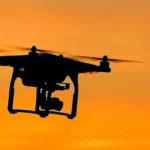
Researchers have meticulously mapped the movements of Thomas Matthew Crooks’s phone leading up to the day of the failed assassination attempt. However, the methods they used in this investigation raise some serious concerns about privacy and surveillance.
Mapping Crooks’s Movements
Using controversial methods, researchers have pieced together the alleged movements of Thomas Matthew Crooks. Their findings suggest that Crooks traveled twice to the city where the now-famous rally was to be held. He also allegedly visited a gun shop and even a building in Washington, D.C., which is notably close to an FBI office. While conspiracy theorists have jumped at the idea that he might have been visiting the FBI, this article will focus on the methods used to gather this data rather than speculate on such theories.
How Was Crooks Tracked?
Contrary to what some might think, there was nothing unique about Crooks’s phone—no special trackers were installed on it leading up to that fateful day. Moreover, the location data used to track him was not obtained by the FBI physically accessing his device. Instead, the information was derived from mobile ad data.
Mobile ad data typically comes from apps that collect your GPS coordinates and then sell them to third-party companies. These companies, in turn, build a web of your movements, primarily to serve you more relevant ads. However, this trade is highly opaque, with data often coming from seemingly innocent apps, like weather apps, which have been exposed in the past for collecting and selling location data.
This data then ends up in the hands of data brokers, who often have minimal online presence. From there, it is sold to various entities—some of which may have questionable intentions. The data is technically anonymized, linked only to an ad ID rather than personal identifiers like your name or phone number. But de-anonymizing these datasets is often surprisingly easy. With knowledge of just a few key locations, such as your home and workplace, it becomes possible to accurately guess the identity behind an ad ID.
This is precisely how researchers tracked Thomas Matthew Crooks. By identifying devices that regularly visited both his home and workplace, they could monitor where else those ad IDs appeared. The researchers behind this analysis are from the Oversight Project, a part of the conservative think tank The Heritage Foundation.
Skepticism and Concerns
There are reasons to be skeptical of this analysis. The researchers claim to have linked at least nine devices to these ad IDs, but it’s known that Crooks only had two phones. This discrepancy raises questions about the accuracy of the data. Additionally, the researchers have not disclosed where they obtained this data—whether it was purchased or provided by a whistleblower at one of these data brokers.
As always, thank you for reading, and stay informed.











